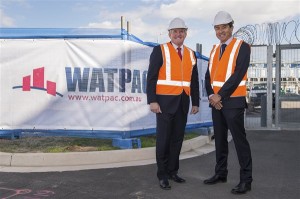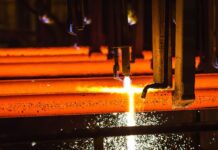Australia broke ground on a new, A$168 million nuclear medicine facility, which will manufacture radiopharmaceuticals used to diagnose cancer and heart disease.

According to the news release by the Australian Nuclear Science and Technology Organisation (ANSTO), the new facility will be based at its Lucas Heights campus and will triple Australia’s production of Mo-99, making it on the world’s largest supplier of radiopharmaceuticals.
“Through this project, we are saying to the world that Australia is set to become a global leader in the high-end manufacturing of nuclear medicines, and will be able to meet a global supply with proliferation-proof medicine produced with Low Enriched Uranium,” ANSTO CEO, Dr Adi Paterson said.
“ANSTO, which currently produces 550,000 doses of Mo-99 annually, has 60 years of expertise in safely managing nuclear research infrastructure in Sydney’s Sutherland Shire, and is looking forward to expanding that role.”
The nuclear medicine project includes a nuclear medicine manufacturing plant, while by-products will be treated at the waste treatment plant, which is also part of the project.
Minister for Industry Ian Macfarlane said construction work on the new facility has already commenced.
“World demand for nuclear medicine is growing as more countries develop modern medical systems, but at the same time supplies are under threat — with the research reactors that produce around 70% of this medicine due to shut in the next few years,” Mr Macfarlane said.
“By investing in this new facility, the Australian government has positioned Australia as a global leader in the manufacture of nuclear medicines.”
The project is being delivered by ANSTO and a number of providers, with Watpac,a leading national construction, mining services and property development company, awarded an $83 million design and construct contract earlier this year.
Watpac Construction’s New South Wales State Manager, Ric Wang, said the Group was delighted to have been awarded a contract to participate in the construction of the national medical facility.
“Watpac is delighted to be delivering this world class building, which will draw on our considerable experience in the design and delivery of major health, science and research facilities across the country,” Mr Wang said.
“We are proud to be involved with such an important project, and our team is pleased to have now commenced early work on site.”
According to the article on Free Malaysia Today, Mo-99 is used in around 45 million procedures worldwide every year and demand is continuously growing, particularly in the Asia-Pacific region.



















